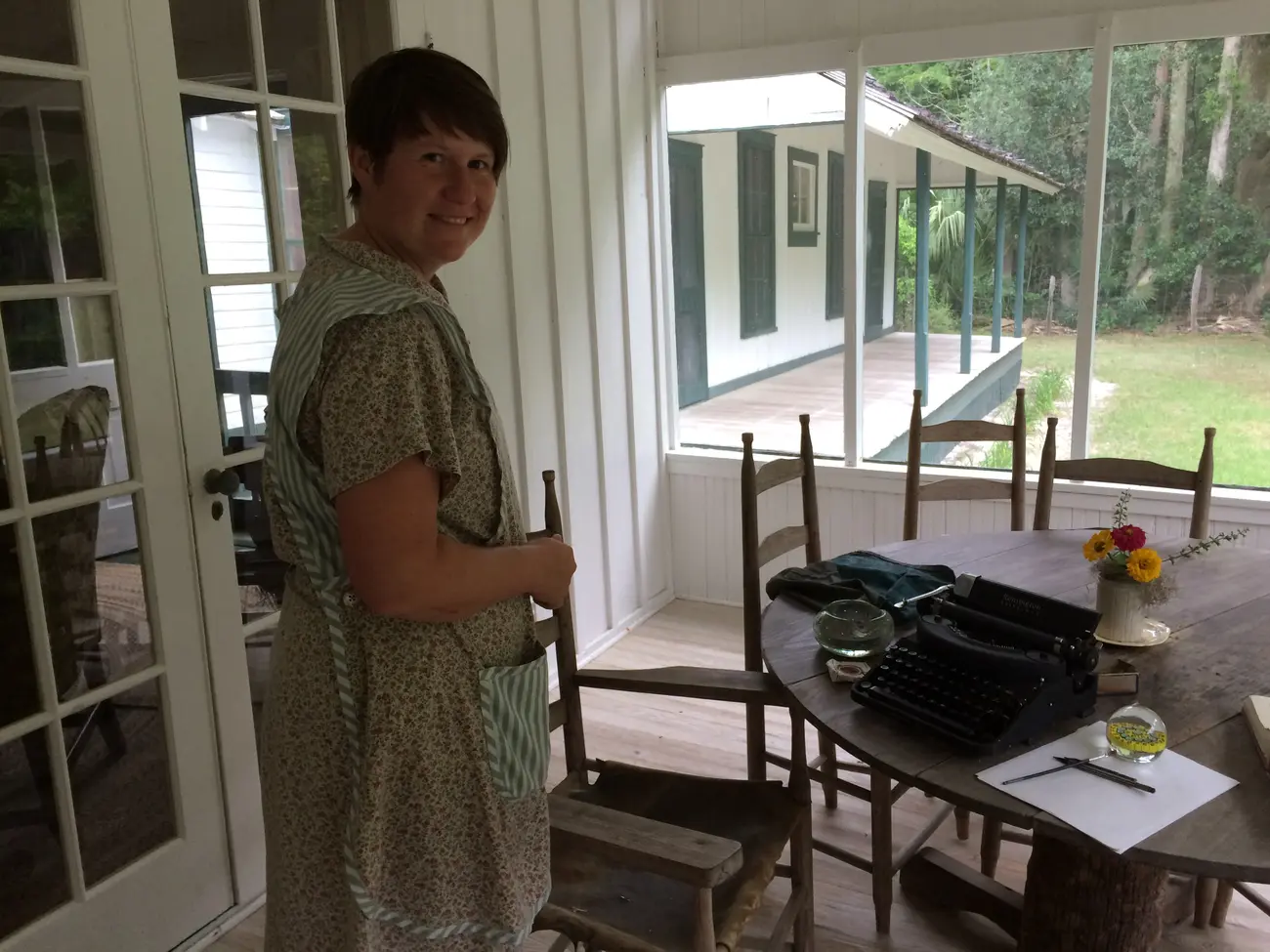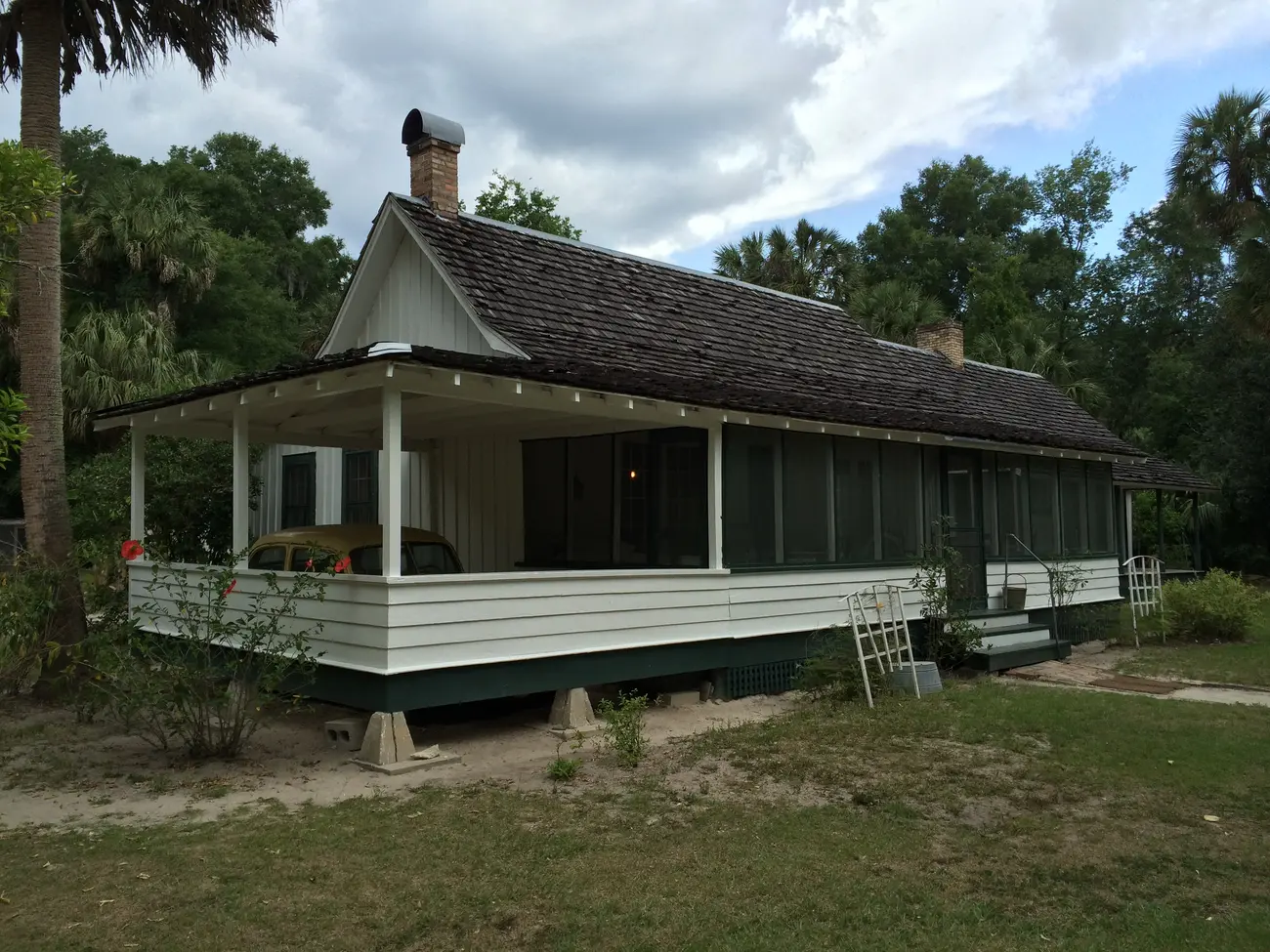A visit to the Marjorie Kinnan Rawlings Historic State Park in the rural community of Cross Creek is like a trip back in time to the 1930s. The home there is furnished just as Rawlings had it when she was writing her Pulitzer Prize winning novel “The Yearling,” her autobiography “Cross Creek,” and other works depicting the lives of Florida Crackers.
Rawlings’s typewriter and notes sit on a table on the front porch, along with her ashtray and a pack of Lucky Strikes cigarettes, as if the writer has just gotten up to get a glass of iced tea from the kitchen.
Each room of the house contains furniture and personal items that belonged to Rawlings or are very similar to what the beloved Florida writer owned.
“She always described it as a rambling farmhouse,” says Carrie Todd, Park Ranger at Marjorie Kinnan Rawlings Historic State Park. “Maybe a little shabby chic is the way to talk about it. It’s white with green lattice on the bottom. It’s 3,000 square feet, four bedrooms, two bathrooms, so it’s large, but it doesn’t seem large. It seems just sort of rambling when you’re trying to go through it.”
Although famous for her stories about rural life in Florida, Marjorie Kinnan Rawlings was not a native. She was born in Washington, D.C., and attended college at the University of Wisconsin Madison, graduating in 1918. She lived in Louisville, Kentucky and Rochester, New York before moving to Florida with her husband Charles Rawlings in 1928.
The couple planned to support themselves with the orange trees on their property, allowing them to write in a beautiful, serene, rural setting.
“They were both writers,” says Todd. “They both were going to write novels and they thought it was going to be an easy time to make money with that citrus crop.”
Growing citrus was a lot more work than the couple had anticipated. Charles Rawlings grew tired of life in the country, and the two were divorced. Marjorie Kinnan Rawlings felt a connection to her Florida land, and stayed there to write.
“Marjorie walked through the rusty old gate and immediately fell in love,” Todd says. “The book ‘Cross Creek’ she often describes as a love story to a place. But Charles Rawlings had a completely different idea about what this was going to be. He thought he was going to be a gentleman farmer. Where Marjorie saw rustic charm, he saw the lack of paint, and the lack of screens, and the lack of electricity, and the lack of running water. He hadn’t been as successful as a writer, so when Marjorie hit it big, he maybe was a little jealous.”
Rawlings first attempted to write Gothic romance novels, but could not interest publishers in her work. Literary editor Maxwell Perkins was fascinated with Rawlings’s letters and stories about her life in rural Florida, and encouraged her to write a novel about that.
“Maxwell Perkins knew that Marjorie was onto something, that she had this really great talent” says Todd. “He got her to take the notes and the little bits she had been writing down ever since she first stepped into Florida, and turn it into a book. ‘The Yearling’ particularly, but she has eight novels and 26 short stories about Florida, so she had a lot of material to work with.”
Rawlings’s most popular book, “The Yearling,” won the Pulitzer Prize for literature in 1939, and was made into a very successful film starring Gregory Peck and Jane Wyman in 1946. Her 1942 autobiography “Cross Creek” was adapted for a 1983 film starring Mary Steenburgen.
Not everyone was pleased with Rawlings’s work. Zelma Cason, a Cross Creek resident who was described by Rawlings in unflattering terms, sued the writer for invasion of privacy, eventually winning one dollar in damages.
In 1941, Rawlings married Norton Baskin, living in both the St. Augustine area and Cross Creek.
“He operated the Castle Warden Hotel, it’s now the Ripley’s Believe It or Not Museum,” says Todd. “She did live in St. Augustine with him most of the time, but came back to Cross Creek to write. She could only write here. This was really her place of inspiration.”

